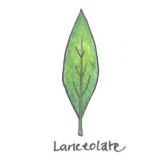Plants by mail order since 1984, over 4100 plants online today
Nursery & Gardens open: Mon - Sat 8:30 - 17:00 & Sun 10:00 - 16:00
Pop up café: open weather dependent
- Shop Now
- Burncoose Specialities
- This Month
- Offers & Promotions
- RHS Chelsea Flower Show 2024
- 40 years at Burncoose
- Engage With Us
- Information, Help & Advice
- About Us & Our Services
- Terms & Conditions
- Log In / Register

ALOE aristata
Commonly known as Lace aloe, Torch plant
Fleshy green lance-shaped leaves each tipped with a soft white spine. Forms a tight rosette to 20cm. Tubular orange-red flowers in autumn on long stems. Tolerates light frost given good drainage
Further Reading....
-
EvergreenForms rosettes of minutely toothed dark green leaves 8-10cm (3-4in) long
-
 Orange
Orange -
 HeightTo 12cm (4¾in)
HeightTo 12cm (4¾in) -
 SpreadIndefinite
SpreadIndefinite -
SucculentStemless, clump-forming succulent
-
 Tender - cool or frost free greenhouseTolerant of low temperatures, but not surviving being frozen. Except in frost-free inner-city areas or coastal extremities requires glasshouse conditions. Plant can withstand temperatures down to 1°C (34°F)
Tender - cool or frost free greenhouseTolerant of low temperatures, but not surviving being frozen. Except in frost-free inner-city areas or coastal extremities requires glasshouse conditions. Plant can withstand temperatures down to 1°C (34°F) -
 Full sun
Full sun
ALOE aristata
- Details
- Description
- Tips and Advice
- Goes Well With
- Planting Combinations
- Other Suggestions
- See Also...
-
Additional Features
 Good to knowReclassed recently as Aristaloe aristata
Good to knowReclassed recently as Aristaloe aristata Pests & DiseasesScale insects, mealybugs
Pests & DiseasesScale insects, mealybugs Place of originEastern and southern South Africa
Place of originEastern and southern South Africa -
Flower ShapePaniclesTerminal panicles to 50cm (20in) long of cylindrical flowers to 4cm (1½in) longTubular
-
HardinessHalf hardy (down to 0)
-
Leaf shape
 Lanceolate
Lanceolate(see photos above) -
Seasonal InterestAutumnSpringSummerWinter
-
Soil ConditionsFree draining sandy soil
-
Toxic - Category C
 Harmful if eatenPeople and pets, i.e. cats, dogs, rabbits, rodents, notably dogs, cats and rabbits
Harmful if eatenPeople and pets, i.e. cats, dogs, rabbits, rodents, notably dogs, cats and rabbits
Jan
Feb
Mar
Apr
May
Jun
Jul
Aug
Sep
Oct
Nov
Dec
Aloe - Care Guide
Useful extras...

Fertilisers & Feeds - Empathy
All-purpose Seaweed Stimulant
All-purpose organic concentrated seaweed feed that is a ready to use, derived from sustainable harvested kelp, that can be used on all outdoor and indoor plants, except acid loving plants.
Perfect used in conjunction with Rootgrow™.
Only £7.50

Garden Goodies
Slate Plant Labels
These wonderfully tactile natural slate plant labels are hand made in Cornwall and come with a chalk pen.
Just stick them in your pot or border. Pack of 6.
Only £10.00






















